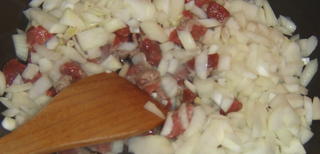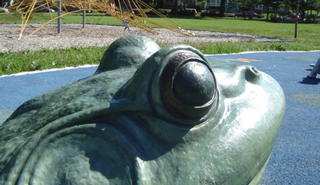The ice cream project: gingersnap ice cream
I can think of at least five reasons to make your own ice cream.
1. It's fun to make things.
2. It's much cheaper to make good ice cream than to buy good ice cream in the store.
3. There are ingredients in storebought ice cream, like stabilizers, that I would rather not eat.
4. There are flavors of ice cream that you can only make--or dream up--yourself.
5. Homemade ice cream, like all home cooking, has the potential to be better than anything you would eat outside the home because you made it your way, with the care and attention you give things you do for yourself and your friends and family. A huge part of food is the experience surrounding its consumption. The french fries in a French bistro may actually taste no different from those in an American greasy spoon, but the experience of the french fries makes them distinctive in each place. When you feed yourself, this experiential component is intensely personal.
The goal of my ice cream project is to be able to create new flavors without constantly looking up recipes in books. I want to be able to do the same thing with ice cream that I can do with Chinese stirfry or pizza or grilled chicken. Vary, substitute, experiment, discover. (For this recipe I admit I'm still using training wheels. This is just vanilla with stuff mixed into it.)
This technique is for "French vanilla," the kind of ice cream made with eggs. Basically, you cook a vanilla custard, you chill the mixture, and you freeze it. A few handfuls of gingersnaps broken up between your fingers get folded in halfway through the freezing process.
The egg yolks, a whole lot of them, are whisked with sugar to the "ribbon stage," which is when a ribbon of egg falls from the whisk. The eggs thicken and pale in color.

This batch claimed my favorite whisk, which snapped in two.

I mixed some heavy cream and half-and-half and heated it gently. I tempered the eggs into the warm cream below, mixing with whisk #2. Tempering eggs heats them up gently without letting their proteins coagulate as they do when you fry them in a pan.

This custard mixture cooked over medium heat until it reached 170 degrees Fahrenheit, well short of the boil. Note the thermometer affixed to the pan by a binder clip. Yes, I have seen every episode of Good Eats.

Once we're up to temperature, the custard goes into a bowl and chills overnight.
The next day you add vanilla extract and pour this soupy mixture into an ice cream machine. It churns away while you wash dishes or check to see how many people logged onto your blog.


When it's done churning you could eat your ice cream but it will melt fast and its texture will be softer than is ideal. Ice cream should be firm but scoopable. At this just-frozen temperature, however, it's the perfect texture for having tasty bits--crumbled up gingersnaps, in our case--folded into it. Then it goes into the coldest spot of the freezer for at least a couple of hours, better yet half a day. If it's too hard to scoop, 10-20 seconds in the microwave will soften any ice cream without turning it into a sauce.

And here is the final product, my fingers around a sugar cone of homemade gingersnap ice cream. I took care to crumble some of the cookies finely and to leave others in large chunks. This gave the whole scoop a gingery flavor, with a few bites that were mostly cookie. I wouldn't change this ice cream one iota. Reader, I ate it.

My other ice creams:
































